Vegan Elderflower Fritters | Spring Foraging
Learn how to identify elderflowers (Sambucus nigra), the medicinal benefits of these flowers, and how to make vegan elderflower fritters.
In the late Spring, the aromatic & medicinal elderflowers are in bloom in our backyard hedge & all around the neighborhood. Instead of making the typical elderflower cordial or syrup, I decided to make deep-fried medicine this time instead! Make sure to watch the full video below for spring foraging tips.
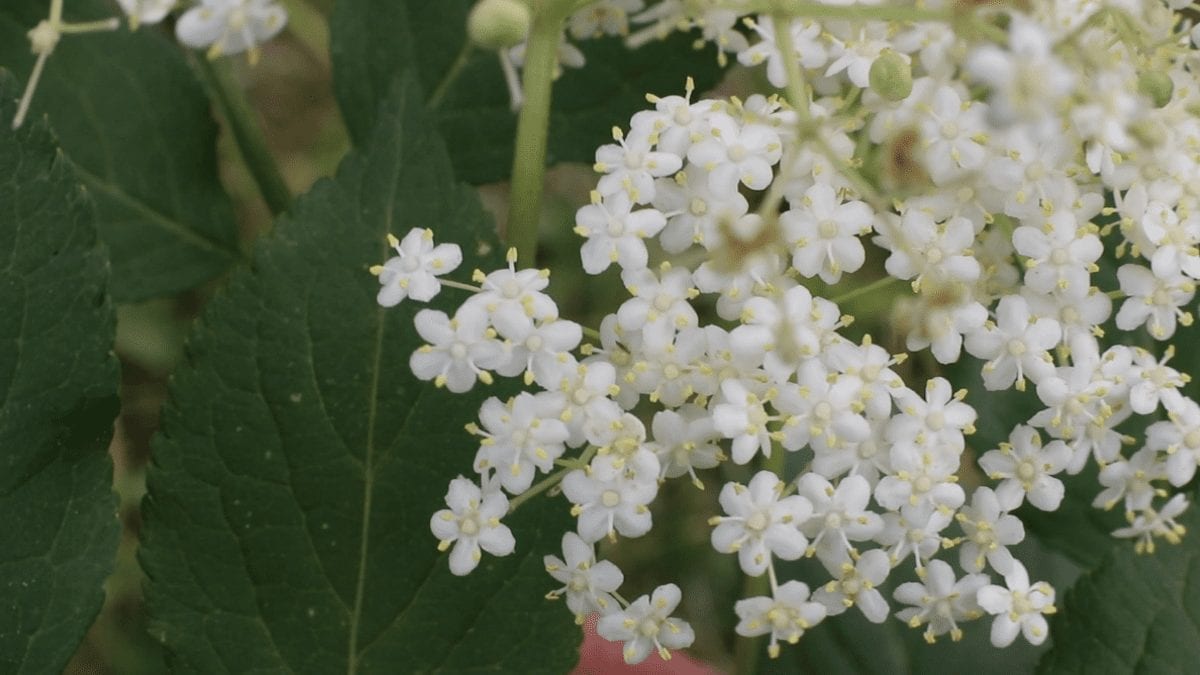
Elder Plant Identification (Sambucus Nigra)
Elder (Sambucus Nigra) is a plant we work with in our online Herbal Remedies course. It’s a large shrub or small tree in the Adoxaceae family. It grows throughout Europe and North America, often along stream banks, rivers, forest edges, and in hedges. The flowers bloom around May to June (a great spring foraging project!), and the berries can be harvested from July to early September.
WARNING: This is not your complete guide to foraging. Always be 100% certain of your plant identification and inform yourself about local lookalikes. Read our full Health Disclaimer.
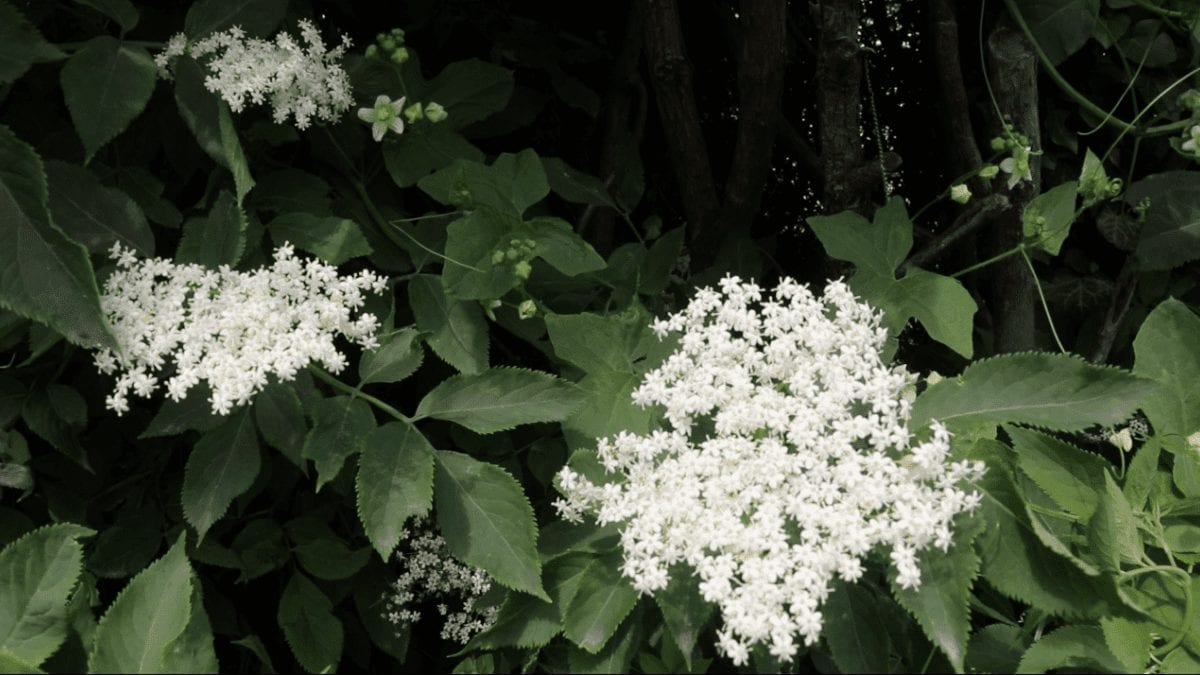
Elder is either a large shrub, with multiple trunks, growing up to 5 meters, or a small tree with a single trunk, growing up to 7 meters – although this is rarer. It has many branching stems and a smooth bark with knobby lenticels.
The leaves are opposite and pinnately compound, meaning they have several leaflets joined to a single stem (compound), and the leaflets are arranged on either side of the stem (pinnate). The leaves are odd-pinnate, because there’s a lone terminal leaflet at the tip. There are 5 to 7 toothed leaflets per leaf.
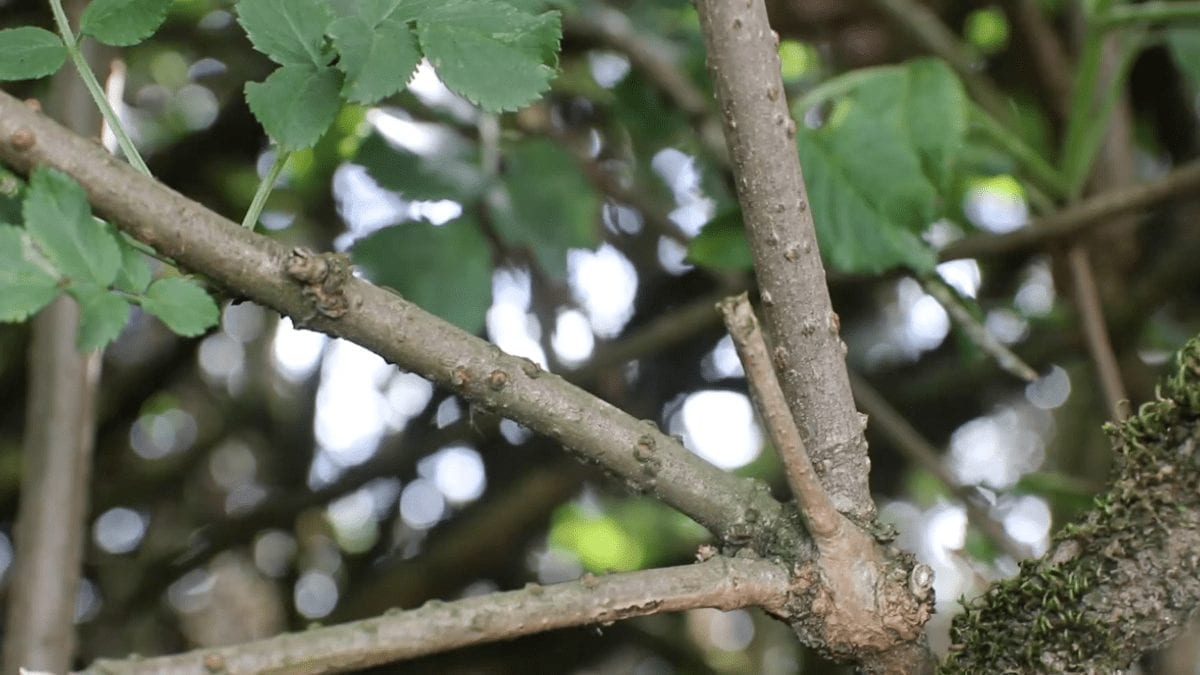
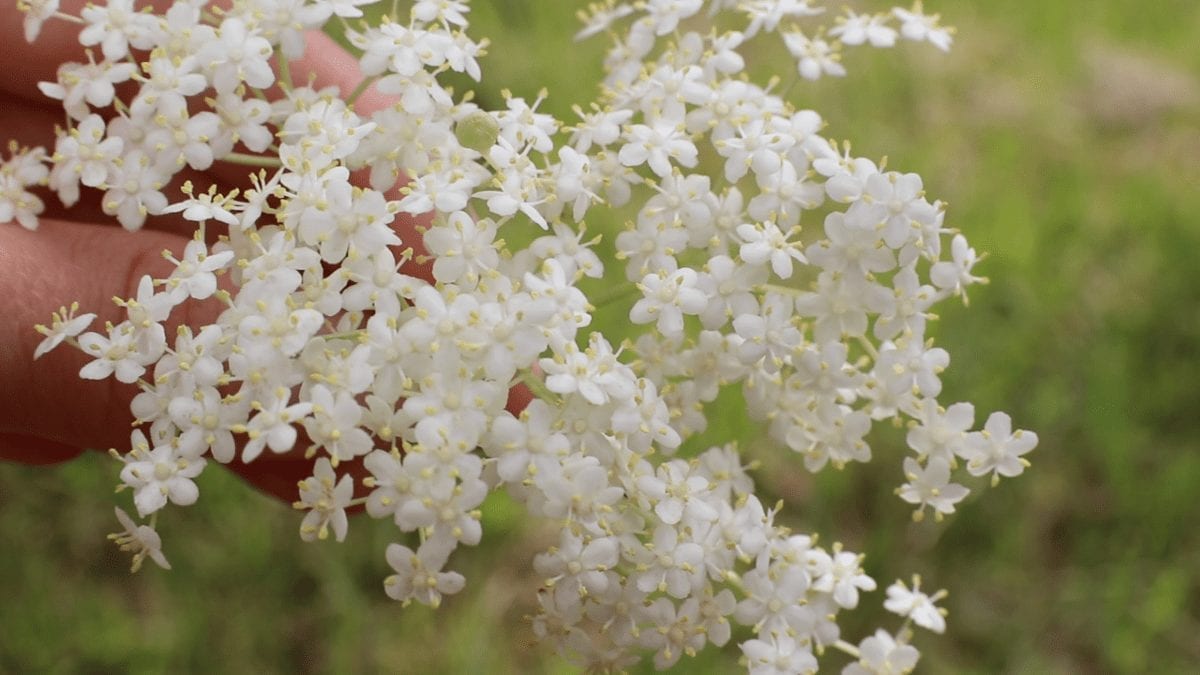
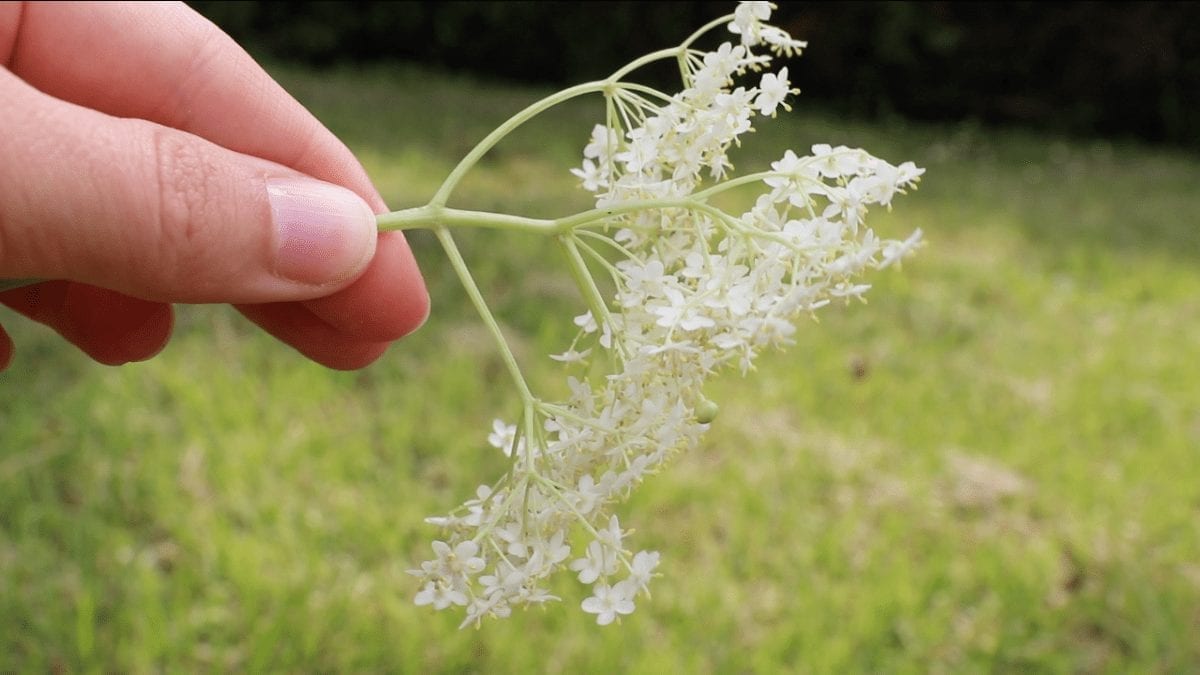
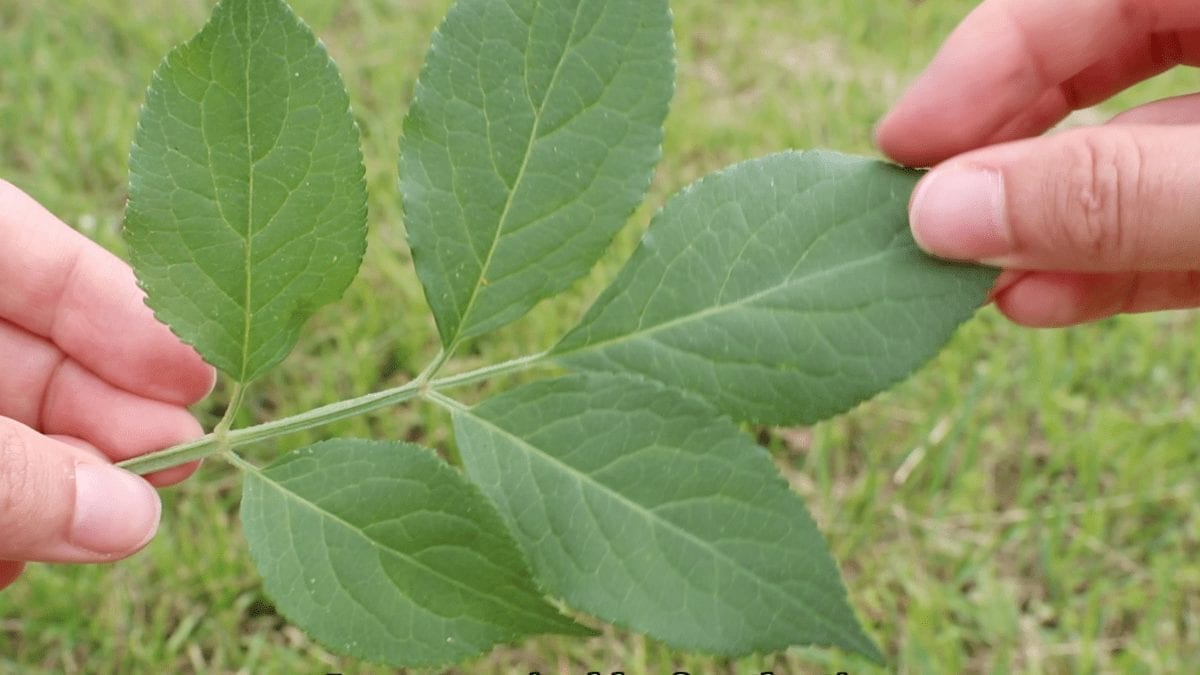
When it’s in bloom, the flowers are white with yellow anthers. They are borne in cymes, a dome-shaped form. The flowers in the inflorescence all grow at a common level, but the flower stalks don’t all start from one common point. The flower stalks start at different levels, so it’s not the same thing as an umbel where they would all start at the same level.
If you cut a twig, you’ll see there’s a white spongy pith inside that comes out easily.
In Europe, you’ll find the European elder, but in North America, you’ll most likely be finding North American elder, which is a sub species. It’s called Sambucus nigra variety canadensis and it can sometimes have more leaflets per leaf (up to 11).
Possible Confusions for Elder (Sambucus nigra)
There are some possible lookalikes in my area in Switzerland, and some where I used to live in North Carolina. I’ll mention these, but please inform yourself about your local lookalikes before your spring foraging adventure.
Toxic Lookalike: Dwarf elder (Sambucus ebulus)
The easy way to distinguish dwarf elder from Sambucus nigra is that it doesn’t have woody growth and doesn’t grow higher than 1.5 meters. When Sambucus nigra is still young and reaches about 1.5 meters tall, it doesn’t have woody growth either at that stage, but it doesn’t bloom yet. If you think you’re looking at edible elder, but the plant is short, and in bloom, it’s not Sambucus nigra. Also, when the fruits arrive, the dwarf elder fruits face upwards whereas the Sambucus nigra fruits face downwards. (This is not the case for the flowers, only the fruits.) Also, the anthers on the dwarf elder are pink, not yellow.

Credit: Willow
Toxic Lookalike: Spikenard (Aralia spinosa)
In the Eastern United States, spikenard is a possible lookalike, but it has distinctive thorns.

Credit:
Toxic Lookalike: Water hemlock (Cicuta)
Water hemlock doesn’t have woody growth and instead of a cyme, it has a double umbel where all the flower stalks start at the same level.
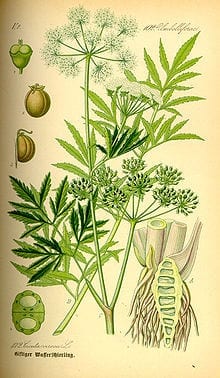
Lookalike: Red elder (Sambucus racemosa)
Red elder’s fruits are red, and the pith is brown instead of white.

Credit: Walter Siegmund (talk)
Consuming Elderflowers (Sambucus Nigra)
Elderflowers from the Sambucus nigra elder are safe to consume raw or cooked. Although if you eat them raw, you shouldn’t eat very large amounts of them. Elderberries are safe to consume as long as they’re cooked, otherwise they can cause digestive problems, diarrhea, nausea, and possible vomiting. The reason for this is the high level of cyanogenic glycosides, specifically sambunigrin, which is toxic. The sambunigrin is highest in the roots, bark, stems, and leaves, which is why those parts of the plant are toxic. The sambunigrin isn’t as high in the berries or the peduncles, and even less so in the flowers. When you heat the flowers and berries the levels of sambunigrin drop. Still, it’s a good idea to remove the peduncles when preparing your elderberries or elderflowers, but consuming a few of those won’t be a big deal.
How can you consume the flowers or the berries? The berries can be turned into a medicinal syrup, which we demonstrate in another video of ours, a jam, a tincture, or cooked up in fruit tarts. The flowers can be eaten raw or made into a syrup too, a liquor, a tea, or steamed up with veggies or as vegan elderflower fritters.
Medicinal Value of Elderflowers
Elderflowers have traditionally been used to induce sweating to lower fevers. That’s because of their sudorific and febrifuge properties. They also have anti-inflammatory properties that can be used for bronchitis and laryngitis; this may be due to its flavonoids content. The flavonoids in elder flowers also have antioxidant and immune-enhancing properties effective at treating flus, bacterial sinusitis, and bronchitis. The flowers can be used as a diuretic and an expectorant as well.
In our Herbal Remedies course, I go into much more detail about the medicinal uses of elder. Click to sign up for the course, the free trial, or the ebook.
Vegan Elderflower Fritters
There are many ways to make beignets or fritters, but we wanted to give you a delicious option for vegan elderflower fritters!
Time: 20 minutes
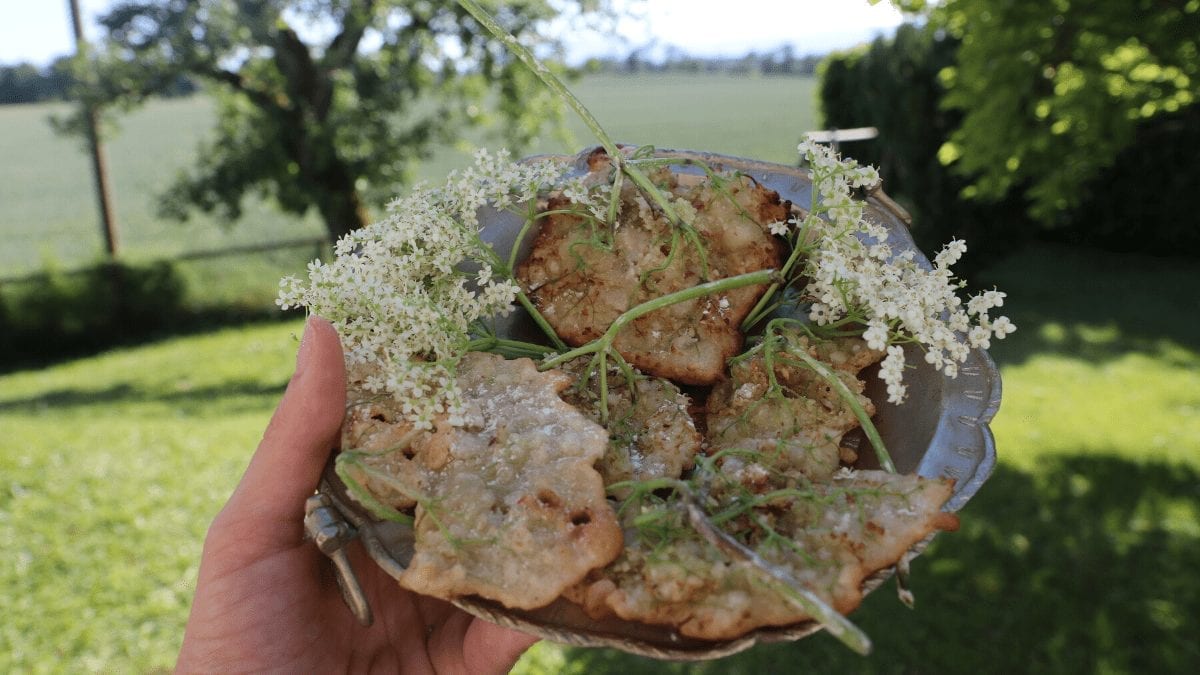
Ingredients & Materials:
- About 10 elderflower cymes, with the long stalk
- ½ cup flour
- ½ cup cornstarch
- ½ cup water
- 2 tbsp. sugar
- 1 tbsp. crushed almonds
- Separately, sunflower oil for frying
- Small pot
- Pan (for the leftover batter pancakes!)
Steps:
- Mix all the ingredients together (not the oil). The texture should be between thick & watery. (If it’s too watery, add cornstarch so it sticks to the flowers. If it’s too thick, add water so the flowers don’t fall off.)
- Heat up 1-2 inches of oil in a small pot. It should be very hot, but not so hot that the oil is jumping out at you.
- Place one elderflower cyme in the batter. Use your fingers to help cover the cyme in batter. Pull it out, let the batter drip off a tiny bit, but not the whole way.
- Quickly transfer to the oil pot, holding on to the long stalk. (It must be long, or else you run the risk of burning yourself.) It will begin bubbling. If the top part of the cyme isn’t cooking because the oil isn’t deep enough, then tilt the pan slightly so that the oil covers the top of the cyme. (This avoids wasting oil.)
- Let it cook until the vegan elderflower fritter browns. This could take a few minutes or less than a minute depending on how hot your oil is.
- Transfer to a serving dish, and repeat.
- Once you’ve finished dipping all your elderflowers in the batter and cooking them, make pancakes with the leftovers. Use the leftover oil to grease your new flat pan, and cook the batter as pancakes on each side until they brown.
Eat the vegan elderflowers fritters while they’re still warm. Make sure to avoid the peduncles as much as you can, and do not eat the stalk!
Do not put the leftover oil down the drain or in your compost pile. You can use it for other recipes that same day, and then put the leftovers in a jar. Places like restaurants or even recycling centers will sometimes collect your oil to have it processed properly.
We hope you love this vegan elderflower fritters recipe! How do you enjoy consuming elderflowers? Let us know in the comments below!
Bon appétit !
Christelle
P.S. If you enjoyed this edible plants recipe, you’ll love our other wild food recipes including our Purple Dead Nettle Tofu Scramble, Red Clover Wild Taboulleh, Dandelion Salad and Plantain Hummus.
By commenting you accept our Privacy Policy.
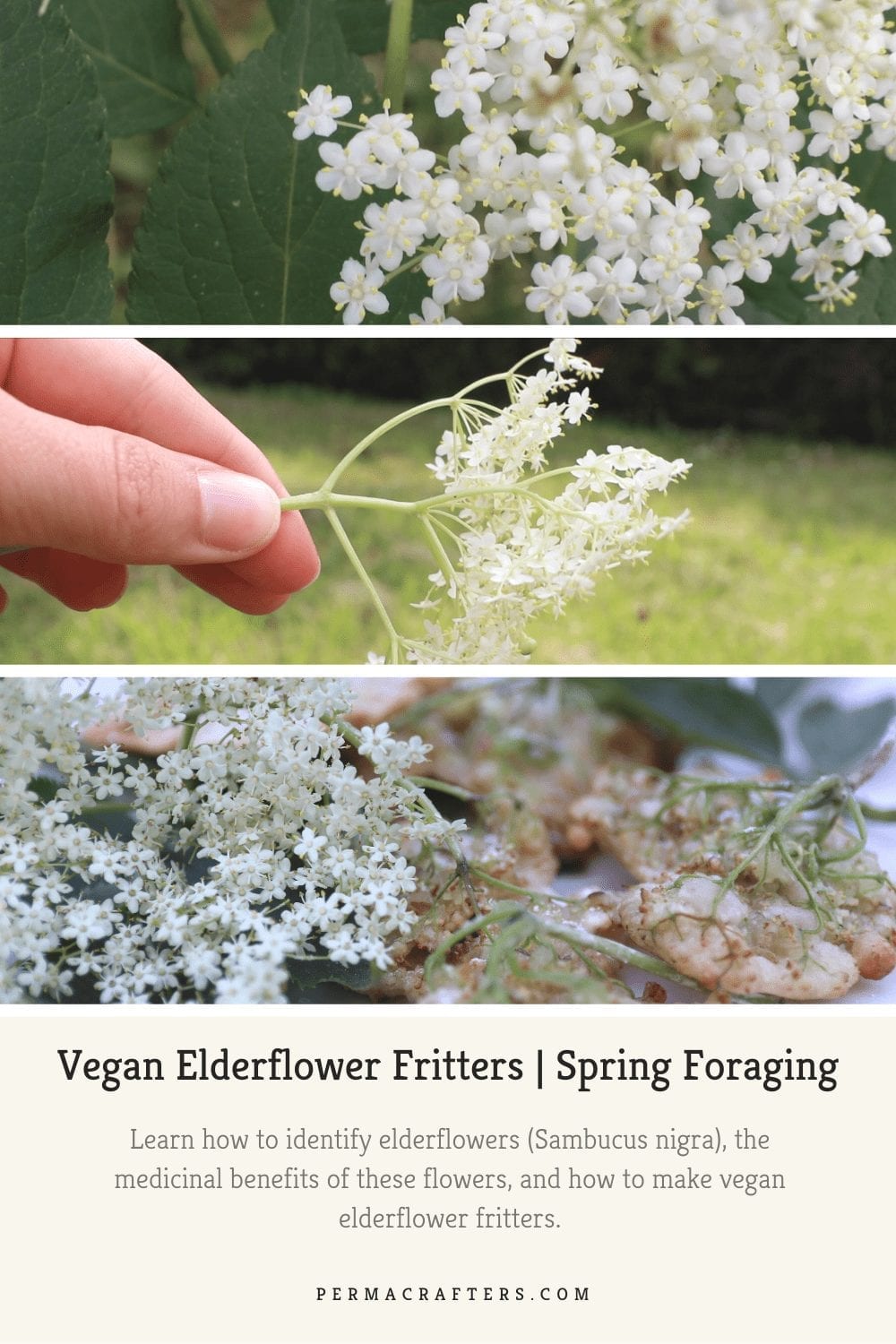
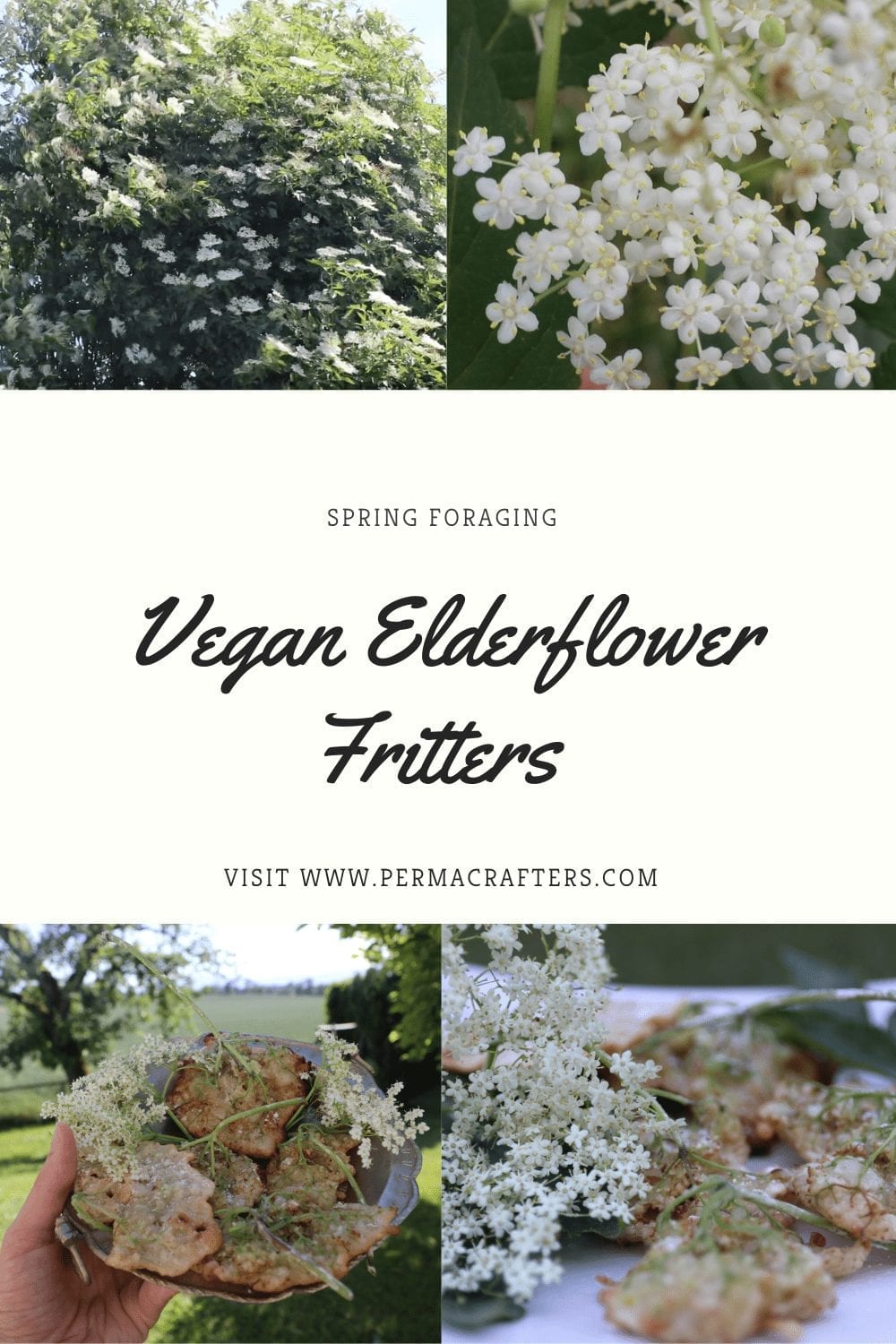
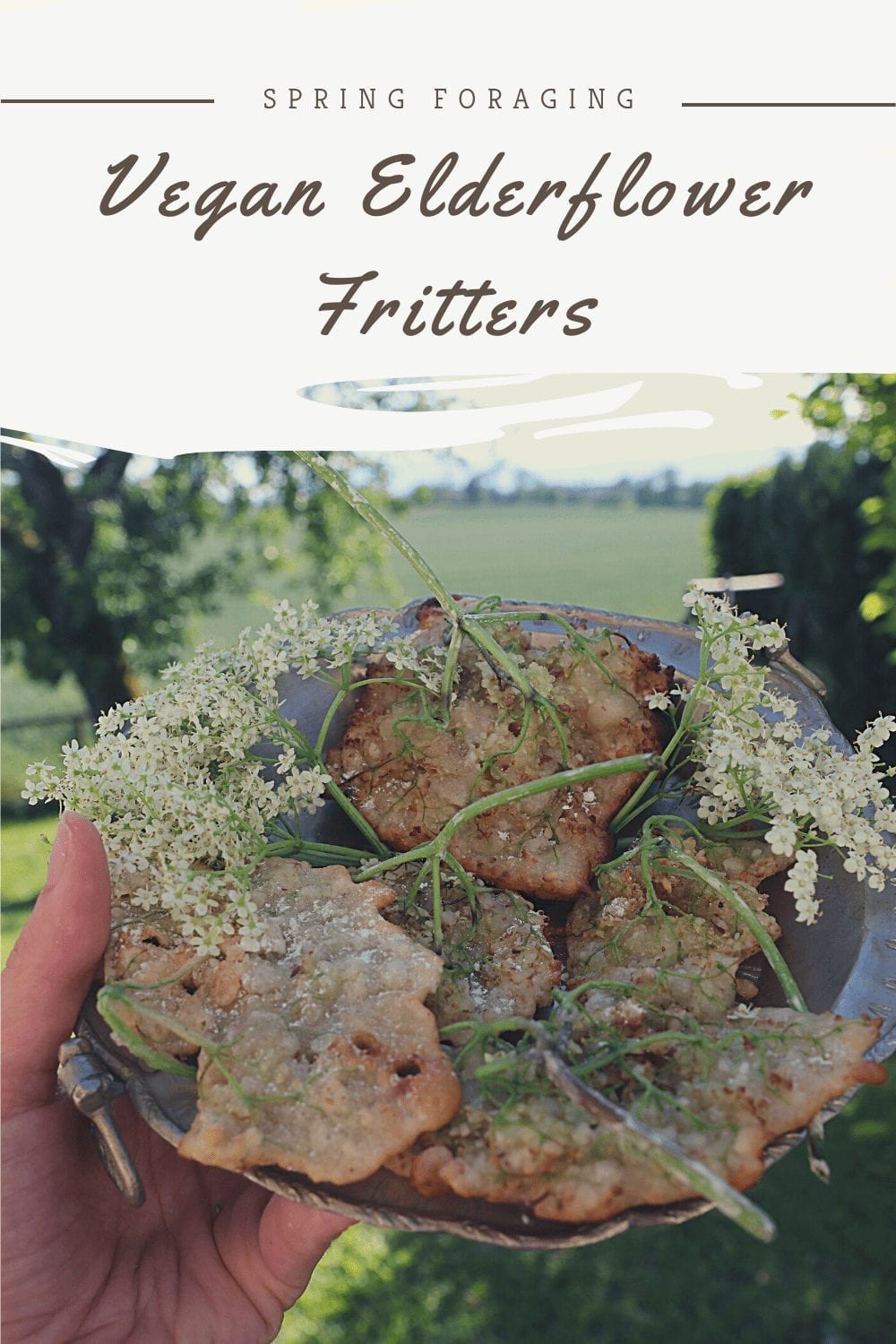
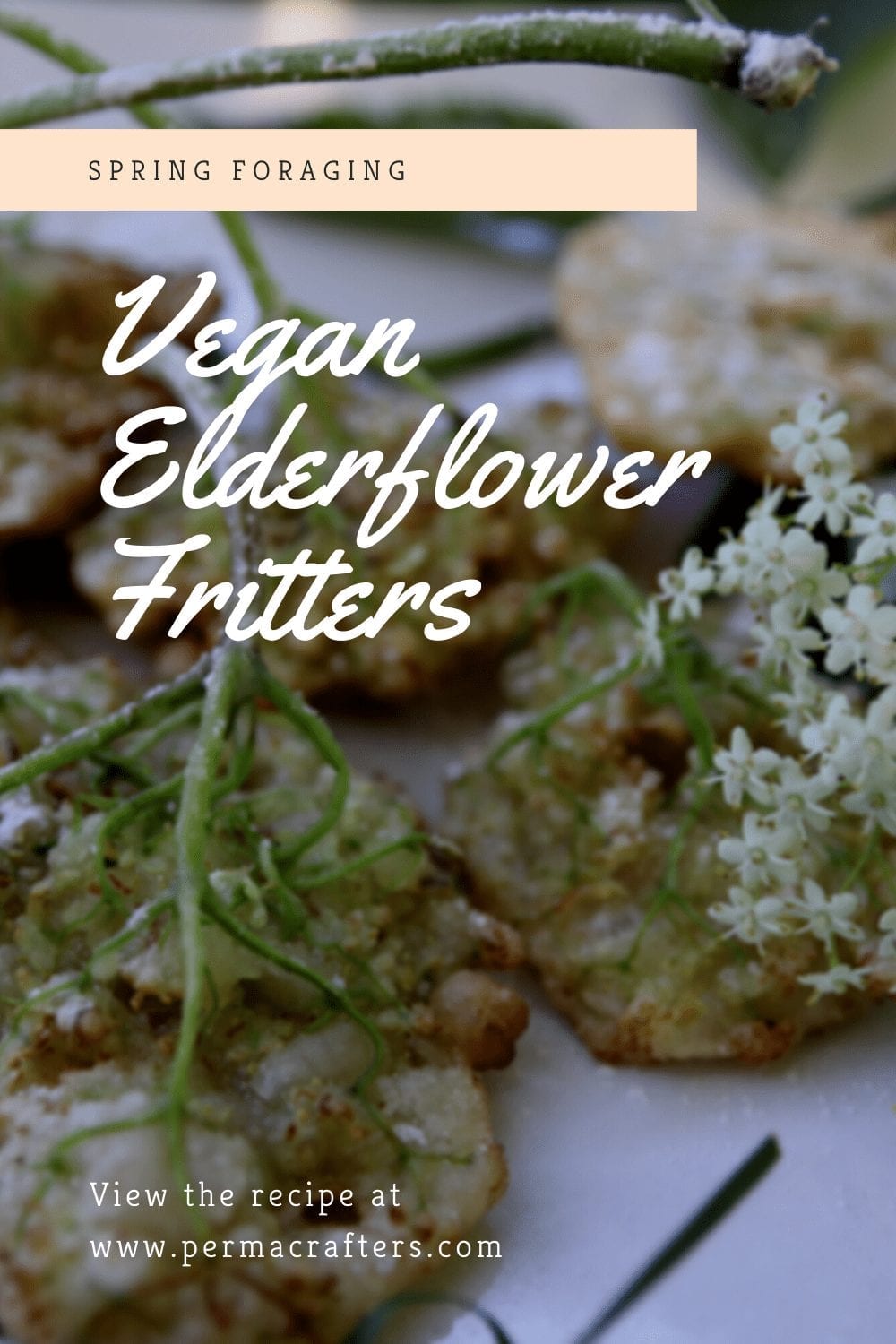
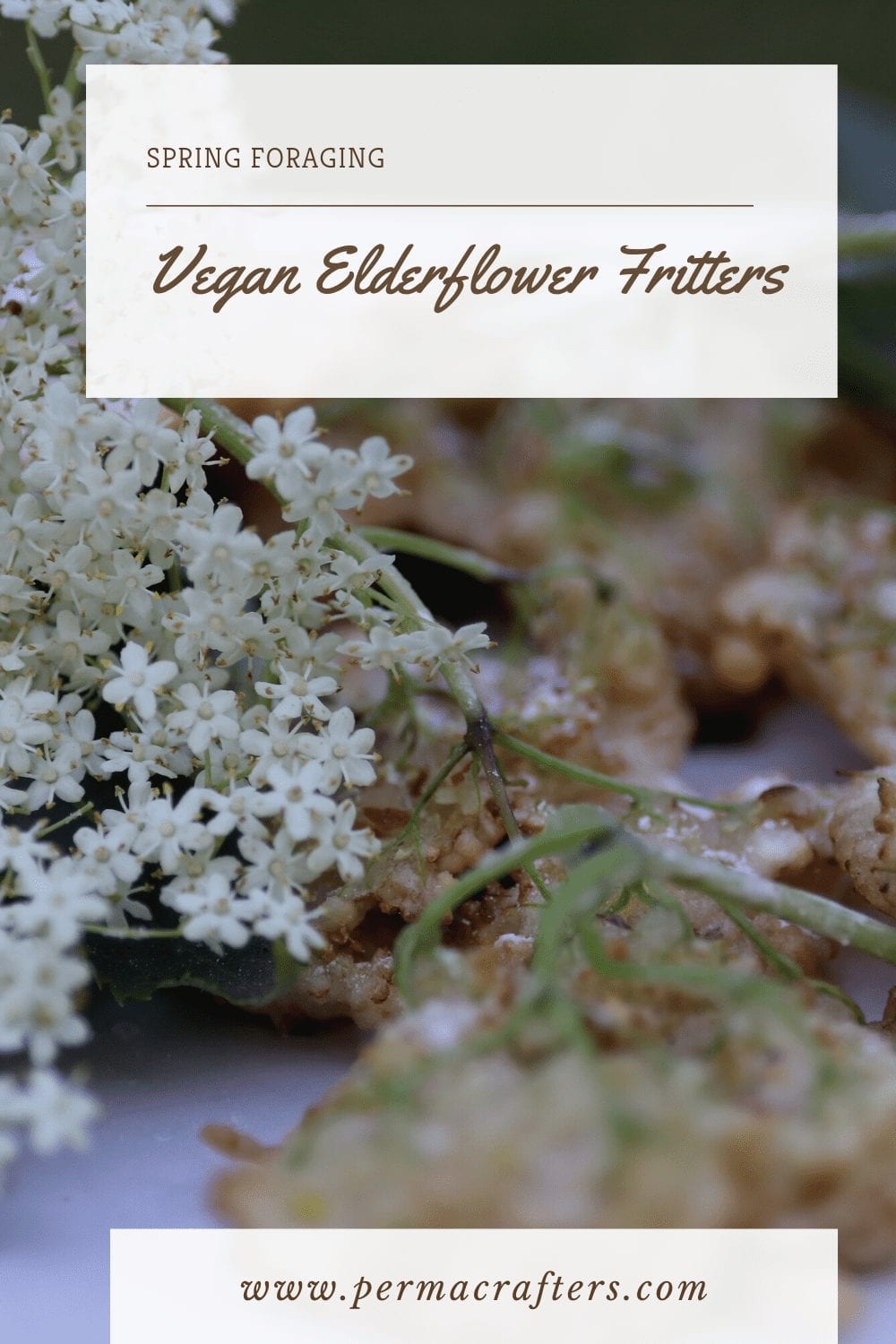
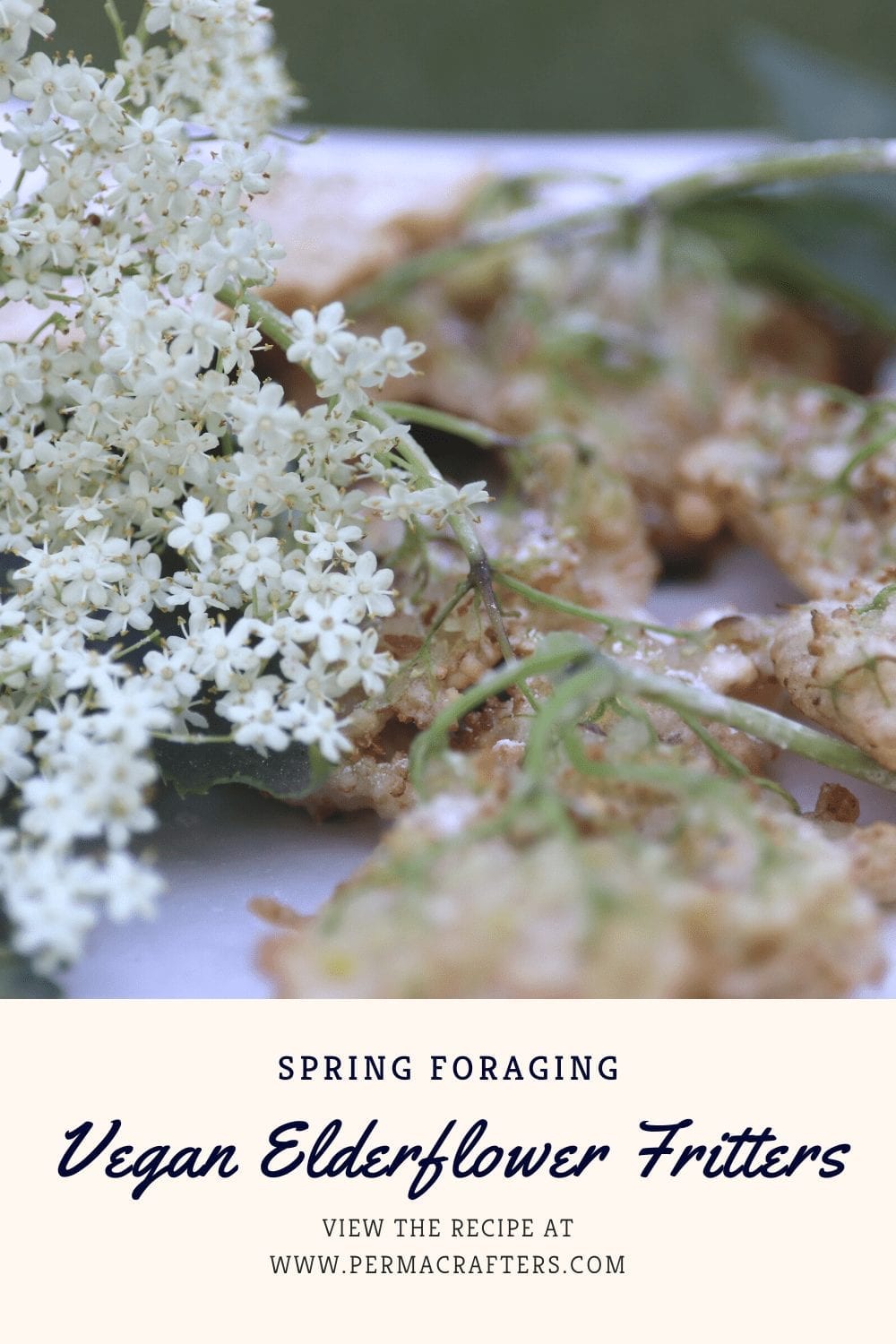


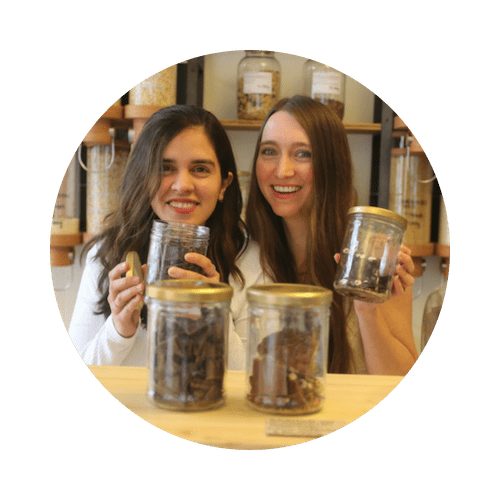
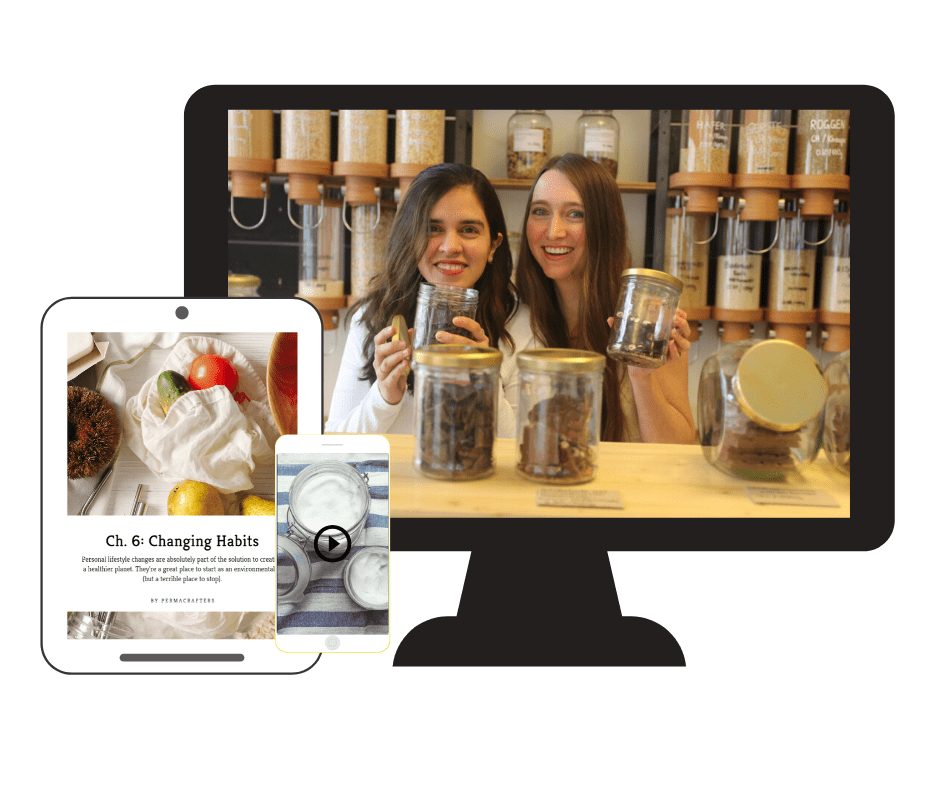
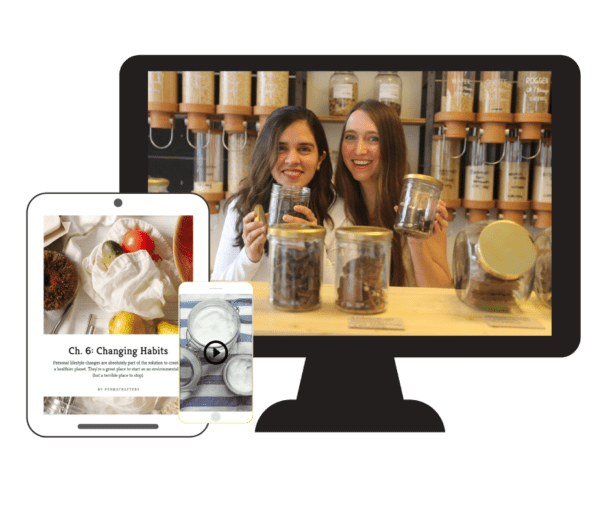
0 Comments